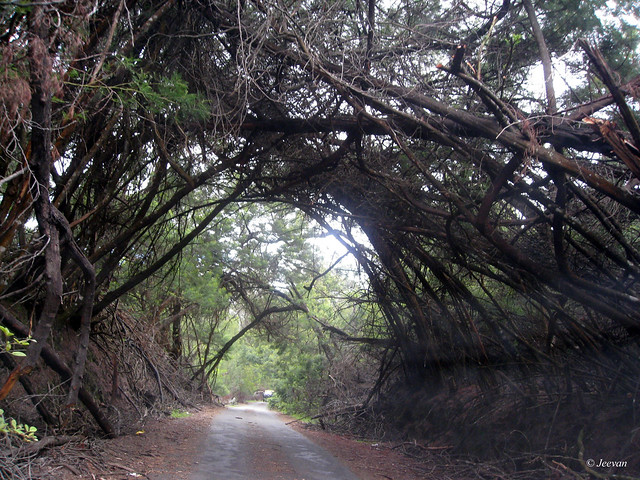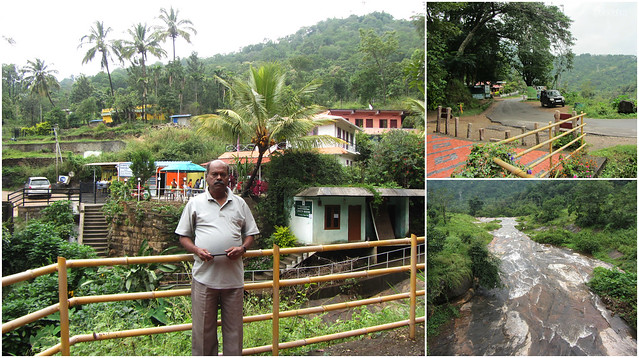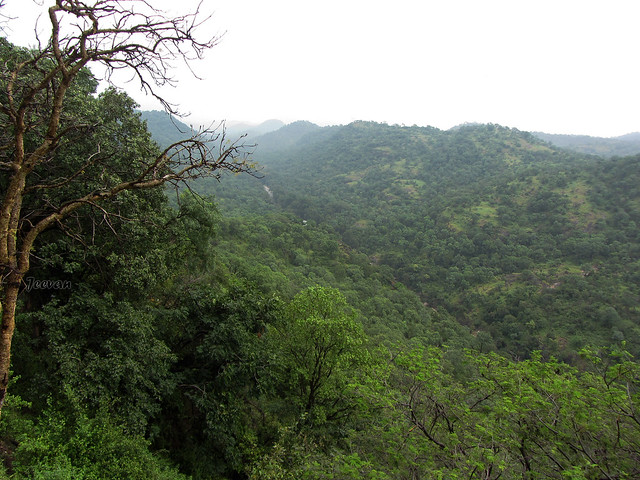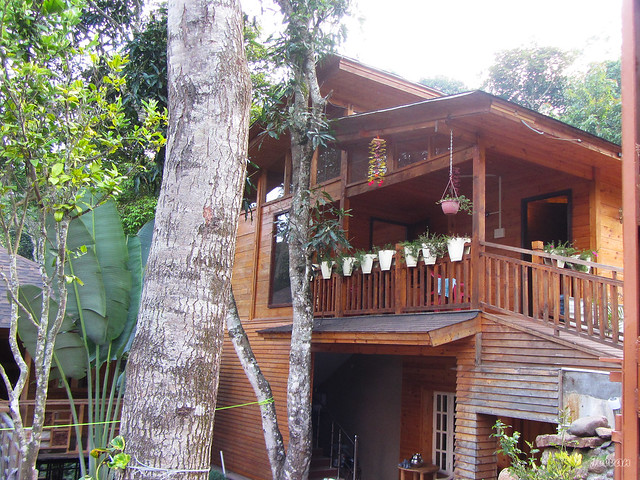Save trees to save ourselves!
A sign of peace
Save trees to save ourselves!
A sign of peace
Several unidentified birds chirp,
Woke me up earlier than usual.
The natural alarm of the woods pleased the ears.
I was still drowsy and perplexed by my state of existence.
Is it that I awoke or that I am still dreaming?
The dark shadow of night removed
As the early light enters the room,
As beams that support a structure
It glows as it reflects off the pine woodhouse.
I couldn't sleep any longer when nature called.
Because we are not bestowed on a daily basis
With beautiful tones of birds tweeting.
Excitement pulls me out of bed.
The night cold had left me with a parched throat
To talk in a hushed tone
I opened the backdoor.
The song of birds fills the backyard with joy.
It gives the eyes work to spot
Birds playing hide and seek in the wild undergrowth.
It was a busy morning with birds.
Before they take off on their daily foraging,
I would try my best to capture them
Before I have my part of breakfast.
P.s. It's been three years since I visited my uncle's woodhouse in the Kodaikanal half-mountains, surrounded by coffee, pepper, and orange plantations. According to Facebook memories, I left for Kodaikanal today in 2019 and couldn't stop thinking about my past visits. The poem was inspired by waking up one morning to birds singing.
Last Sunday, I was able to go out for the first time in nearly 5 months. I chose to go to a place that hadn't been much explored by many. But when I got there and saw rows of cars parked in front of the lake, I realized I had guessed wrong. Among the row of cars, ours (a black Scorpio) is in the middle, and it was me sitting in the passenger seat.
I learned about Kumizhi from a vlog and knew I had to come as soon as possible, but it took me more than a year to visit. Kumizhi is a village about 50 km south of Chennai, on the Nellikuppam road between Kandigai and Othivakkam. Kumizhi features a beautiful lake and small hill forests at a distance of 700 meters in the western direction from the Kumizhi bus stop.
Being Sunday, I expected to see a lot of bikers in Kumizhi, as I had seen a lot of photos and videos of them on Instagram, but instead, I saw families and kids. The reason I noticed it was because the Kovalam Surf School had set up a camp there, and the students and their families had accompanied them and kept themselves occupied on the peaceful lake.
Another surprise awaited me: the lake bank had been fenced off from vehicles entering, and a small gap was left for the public to enter. Though it kept me away from the water, as I thought of getting close by car (I haven't taken my wheelchair to get down there), it was a good decision to protect the lake and its environment from damage by vehicles since the bikers take their bikes deep into the woods beside the lake.
We drove for a km and a half on the road alongside the lake and forest to enjoy the scenery, and the wind was cold since it was evening and the late winter season. It caressed. I have marked a couple of peacocks spotted in the forest. Because of the contrasting sunlight, we didn't get a clear picture.
The forest seems to have many birds, and we observed some peacocks, one of which flew across the road, and I also noticed a mongoose on the road. Although seeing a mongoose isn't surprising given the number of them in our neighborhood, I wish I could have spent more time there viewing additional birds and creatures. Avoid Sundays if you want to appreciate the peace of nature.
In addition to swimming, the surf school (that was camped there) appeared to offer kayaking to students, and I also spotted a student balancing on a surfboard on the tranquil lake. During the rainy season, I saw images of the lake where the water level had risen to the road, but when I saw the water level had dropped, it seemed to be an advantage for practicing water sports.
My mom went close to the lake to capture these photos on my behalf. We left the place with a desire to come back, and I wish to come back in my wheelchair to explore the nature out there. I recommend this place as the best picnic spot for family and friends' gatherings and for those who want to spend time in peace and meditation.
I'm guessing the lake is already a campsite, with small hikes and tent stays arranged in advance. The road is well tarred for less than a kilometer from the lake up to the Siva temple in the middle of the forest, and it continues to be a perfect off-road for riders alike.
I went for a short ride on this road just for fun, and I believe that the road that is less traveled or offroad provides the best experience of nature, and I enjoyed it. And it wasn't difficult for us because we were in a high-ground SUV, but cars will suffer.
The first bird I shot from my first time stay at my uncle's woodhouse in Thandikudi, near Kodaikanal, was the Crested serpent eagle. The bird of prey came very close, perching a tree in the backyard of the woodhouse, and I shot the bird from the balcony that overlooks the coffee plantation and wild vegetation.
I already stayed at Thandikudi twice then and have seen the serpent eagle in one of my trips, but that was the first time I encountered at the close, and the bird was looking for prey - perhaps a little bird that was flying around. The bird flew later with a great swish-swash of its widespread wings.
My uncle constructed the woodhouse and cottage in late 2015 in the coffee estate he bought lately then, and we have been visiting the property (Smokey Haven) since 2016 until pandemic blocked any course of travel. Glad I hold many photos from the trips to the property to unfold any time to travel back in memories and thus a moment shared with an eagle.
The Crested serpent eagle is a medium-sized bird of prey found in forested habitats across tropical Asia. Like its broad wings (with which it flies over the forest canopy), the bird's range is widespread across Asia, with variations within itself; some treat several of its subspecies as separate species. The bird with long feathers on the back of the head (apart from having a look of a large head) give them a maned and crested appearance, and hence feeding on snakes often, gave them their name and are placed along with the snake eagles in the subfamily Circaetinae. (source wiki)
Foxes and Jackals have become an endangered species in our Indian subcontinent, and I remember seeing a Jackal (in wilder) only once in the Kodiakkarai scrub forest, aka Point Calimere. I have been to many wild forests, but nowhere I could see a Fox or Jackal. It seems the foxes have almost lost their habitation, and who could be responsible for that other than us, the human beings?
Man hunted foxes/jackals for their skin and flesh - believing to have medical values is used in traditional medicine is one of the reasons for the foxes to disappear from the forest. And those who hunt foxes are called Narikuravar (fox tribe) in southern India, and they sell things made of fox body parts, esp. they make necklaces with fox tooth hanging.
But they stopped hunting fox/jackals after the Indian Wildlife Conservation Act (1972 as amended to 2005) forbids the hunting of all wildlife; they were prohibited entry into the forests; thus took alternatives such as selling beaded ornaments to survive. But beyond that, habitat loss is the main reason for the fox/jackal to become endangered. The conversion of grassland habitat to agriculture, industry, and increasingly bio-fuel plantations have drastically affected its population.
There is an attitude of comparing fox/jackal trickery and ingenuity with people among us, who are very sharp, specific, and self-centered. There's a famous story of The Fox and Crow told in various versions (and ours was "granny's vada"); to praise the trickiness of fox, but the moral of the story was to never deceive anyone cunningly for our benefit and don't believe everyone's word.
There is also a superstition in India that waking up on a fox face or hearing a jackal howl means good things will happen. And there are much folklore, mythology, and literature relevant to the jackal's cunningness and religious beliefs. So whatever it is, preserving a dying species is everyone's duty, and those living around the forest need to be more responsible, emphasizing the same.
The golden jackal I shared here was shot at Amirthi Zoological Park, near Vellore. The Park has a nice set of dens, that too a colorful one - paintings of trees resembling the walls of the kindergarten - covered by a partial dome-like cage. When we visited, a lone jackal was roaming outside the dens - there are two separate dens, what I guess was there must be at least a pair of jackals - right now, only one is available.
The Golden Jackal, believed to be a social animal that lives either as pairs or packs like wolves, is native to Southeast Europe to Southeast Asia. Comparatively, a small size wolf, "the jackal possesses shorter legs and a shorter tail, a more elongated torso, a less-prominent forehead, and a narrower and more pointed muzzle. The golden jackal's coat can vary in color from a pale creamy yellow in summer to a dark tawny beige in winter."
"The genetic studies indicate the golden jackal expanded from India around 20,000 years ago, towards the end of the last ice age. Golden jackals' habitat in valleys and beside rivers and their tributaries, canals, lakes, and seashores feed on foods ranging from fruit and insects to small ungulates." (courtesy wiki)
Tiger - the national animal of India - spread all over the country from the foothills of the Himalayas to the southern tip of India Kanyakumari. India has many National Park and Tiger Reserve. It was Project Tiger - a tiger conservation program that began in 1973 to prevent the animal from becoming extinct and preserving its natural habitat - the tiger population in India has increased to nearly 4000.

Tiger wall painting from Amirthi zoological park, near Vellore
There are five tiger reserves in our state (Tamil Nadu), and the Mudumalai in the Nilgiri District is the oldest National Park and Tiger Reserve. Nilgiri is the largest biosphere covering about 80% of the forest, and Ooty, a popular south Indian hill-station, is the administrative town of the district. And Nilgiri being a great forest terrain with widespread tea plantations and small towns and villages, the human-animal conflict has been a common thing, and sometimes it costs human lives.
Most of the time, elephants cause damage to materials and lives of people, and seldom tigers or leopards, or bear cause death. Human-animal conflict is mainly because of humans occupying forest space and interfering with the path of animals. Human encroachment and building of houses and cultivation on the migratory path lost track of animals to invade human habitation and confront lives.
Now coming to the man-eater that has taken away the lives of four people in the last few months in the Nilgiris has become a threat to lives adjoining the Tiger Reserve. The higher officials have issued an order to shoot the man-eating Tiger against the initial decision of capture it alive using the tranquilizer to sedate. The decision to kill the Tiger was taken based on 4th victim, who was killed and ate by the Tiger, while in the other incidents, the victims were just stroke to die.
Tiger is said to be a shy animal and mostly seems to avoid the human presence and stay away in the dense forest area, infiltrate the human habitation only when it was unable to survive in the forest, due to wound or aging. The case of the man-eating Tiger, which caused the death of 4 people, has taken place in the buffer zone - an area adjoining the forest, where people drive cattle for grazing.
We can't justify here where the villagers would go - who lives inside or adjoining the forest - to feed their livestock. I think it's the human mistakes that we can't blame animals, and they don't know the boundaries, and deforestation has shrunk their habitation. So the only way to protect their existence was by giving before animals and staying away from the forest.
They say, once the man-eater would always like to taste human flesh, and driving it away could never be a solution than hunt down or cage the Tiger at some protected place. I watched a Bollywood movie lately called Sherni - acted by Vidya Balan as a woman forest officer - trying to catch (believed to be) a man-eating Tigress and create peace in a remote village adjoining forest. But the movie ends with Tigress falling prey to human pride and official injustice, leaving back its cubs.
The targeted man-eater seems to keep moving since the victims don't come from the same place, and the last man reported to die was from Masinagudi, about 30-35kms from the previous victim. Masinagudi is a small town located in the middle of Mudumalai Tiger Reserve is one place that greatly infiltrates the forest land by building plenty of resorts in the buffer zone. Due to strict action lately, many resorts built on elephant corridors were closed.
The latest update was the man-eater escape the official surveillance! And a search operation is launched with the help of Kumki elephants - trained elephants to trap and rescue wild elephants. As a piece of good news, the Tiger will be caught alive, said the officials.
(sorry for the long post) I just went with the flow of thought and info. Thank you
Captured this cute little blossom
from the wilderness mixed with fear and excitement! It seems like a kind of wild daisy flower was bloomed a lot alongside the headwaters of
the Bhavani River in Nilgiris, and these flowers were tiny and less than an
inch in size bloomed in white as well.
The headwater of the Bhavani
River is one of the wildest places I have visited (in 2011) and, it still excites me to
think back. There was no one at the place when we visited as 7, not because it
was a weekday or off-seasoned, but it's a restricted place and needs permission
from the forest department. It's not an easy task unless a few years ago,
before the forest department make revenue by turning it into an ecotourism
spot.
Once entered, we are cut off from
the outside world, though it was 10 years before - even now too; if trapped, we
would be left to a standstill until the forest officers come to rescue. Photography
was prohibited inside the forest, but we had no option, and it's impossible to
resist taking photos as what we see was pristine in its beauty to the senses. Despite
the warning, the officer in charge tested our truthfulness by enquiring we have
a camera; later encouraged us that going inside the forest without a camera is
worthless and said it's ok to carry a camera and make sure to keep it out of
their officials' sight.
I never shared any photos shot
from my visit to this place, not that it was prohibited but to protect nature
in my personal interest. Today many photos are upload from this place, and
perhaps to say after it was open to the tourist in the name of ecotourism. This part of the western catchment area
contributes a tremendous amount of water - for hydroelectric, irrigation, and
drinking, which needs to be preserved from any action against its ecosystem.
There are a few more lists of
places I visited that I have no idea of sharing in the future too. But I wish I
could write my experience here and there.
Some kind of wild or unknown insect, which perhaps looks like a sort of mosquito. From a long back visit to Yercaud
Linking this post with SATURDAY CRITTERS
 |
| Captured from one of my trips to mountains, staying at uncle's woodhouse in kodaikanal |
 |
| Indian pond turtles |
 |
| Python relaxing at its room |
 |
| Golden Fox (see on the right) in its cage |
 |
| Pelicans and herons |
 |
| A welcome arch by nature through forest, shot during a visit in 2009 |
 |
| My dad stood at the side of the falls, and our car parked aside the road (pic right above) and water running down across the bridge on other side of the waterfall |
 |
| The valley view where the Pambar river winding through thick forest after magnificently fall as Thoovanam |
 |
| My uncle's woodhouse called Smokey Haven |